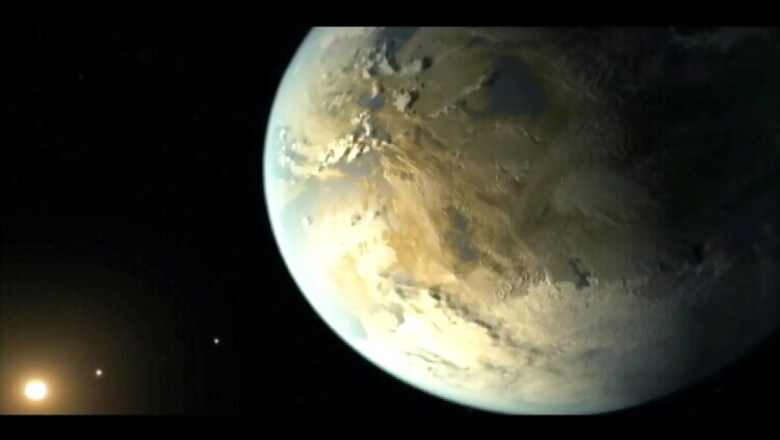
views
Paris: Astronomers, on Friday said they had found a planetary system with three super-Earths orbiting a bright, dwarf star -- one of them likely a volcanic world of molten rock.
The four-planet system had been hiding out in the M-shaped, northern hemisphere constellation Cassiopeia, "just" 21 light years from Earth, a team reported in the journal Astronomy & Astrophysics.
It comprises four planets -- one giant and three super-Earths orbiting a star dubbed HD219134. Super-Earths have a mass higher than Earth's but are lighter than gas giants like Neptune, Saturn or Jupiter. They can be made of gas, rock, or both.
The planet with the shortest orbit, HD219134b, zips around every three days, and has now been observed transiting across the face of its star as seen from the vantage point of Earth.
Measurements from the ground and with NASA's Spitzer space telescope showed its mass was 4.5 times higher than Earth's, and that it was 1.6 times larger.
"Its mean density is close to the density of Earth, suggesting a possibly similar composition as well," said a press statement from the University of Geneva, whose
astronomers took part in the research.
"It's very close to the star. The temperature is about 700 degrees" Kelvin (427 Celsius, 800 Fahrenheit), study co-author Stephane Udry said.
"Probably the surface is melting... kind of a melted lava world with volcanoes... not good for life."
It was not in the so-called "habitable zone" of its star, and would not have liquid water necessary for life. But HD219134b is exciting for another reason: it is the
closest transiting planet known to scientists, and thus offers a rare opportunity for further study of its composition and atmosphere against the backdrop of its star.
"These transiting systems are especially interesting in that they allow characterisation of the atmosphere of the planet (by studying) the light of the star going through the atmosphere," Udry said.
And the system is relatively near at a distance of 21 light years from Earth. By comparison, the closest star to our Sun is three light years away, and the second six light years.
Among HD219134b's fellow planets, the second furthest from the star weighs 2.7 times as much as Earth and orbits in 6.8 days, the next is 8.7 times more massive than Earth with a 47-day orbit.
A giant planet further out orbits once every three years, the team said.


















Comments
0 comment